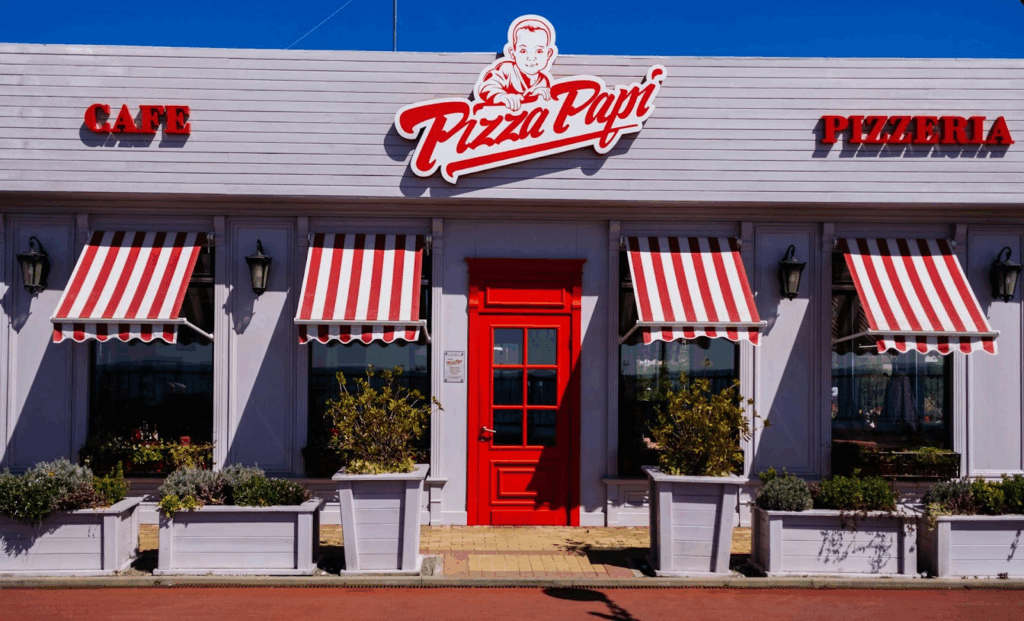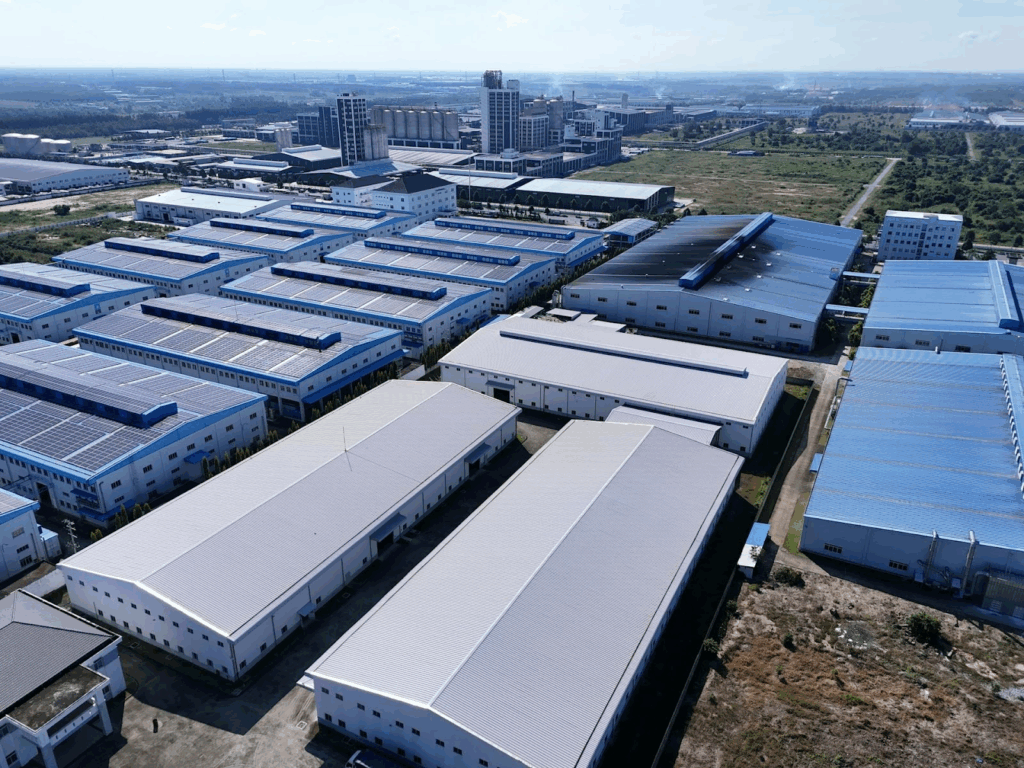
Commercial Property Insurance Calculator
Find out what you’ll potentially owe using our commercial property insurance calculator – then dive into secrets on how you can save your company thousands! For the most accurate and competitive quotes – get a free commercial insurance estimate from our team. We offer the most affordable premiums with the best coverage.
Commercial Property Insurance Calculator
Getting a quote for your property is just the first step – and you’re likely getting quotes from several different companies – fair enough, as you should! When visiting each of those company sites, you likely came across a calculator like the one we have above! But how does it work? What does the algorithm look for? And can you really rely on a calculator to take the nuances of your property into account? Well, we’re going to give you the deets and show you how to, essentially, work with the system! Let’s get into it!
Table of Contents
- TL;DR
- Why Your Insurance Calculator Might Know More About You Than You Think
- How to Work With the System (Not Just Hope for the Best)
- The Overlooked Tech Link That’s Changing Your Insurance Cost
- When Personalization Gets a Little Too Personal
- How Rules Change from State to State (and Why It Matters)
TL;DR
- Today’s commercial property insurance calculators don’t just crunch numbers, they look at how you interact with the tool, using your behavior to spot when you might be downplaying risk (even if you don’t mean to).
- Savvy business owners treat calculators like a roadmap, not a hurdle. By understanding how these systems work, they adjust their operations and documentation to get better premiums without cutting corners on protection.
- Many calculators are now plugged directly into your business systems, like IoT devices and financial platforms, so your live data can affect your premium in real time.
- Different calculators prioritize different risk factors. Trying more than one helps you see which one “gets” your business best and offers the fairest rate.
- If your business operates in more than one state, you might be able to take advantage of differences in local regulations to legally lower your premium, even without moving your physical operations.
Why Your Insurance Calculator Might Know More About You Than You Think
Let’s say you’re shopping around for commercial property insurance. You find a calculator that looks decent, you fill out your info plus some details here and there, and you expect the calculator to just push out some numbers and call it a day.
Here’s what you don’t know: these calculators are not only checking out the numbers you filled in, they’re checking you out as well.
Your square footage and the few other details you entered are only part of what the calculator is looking at. These modern commercial property insurance calculators are keeping a very close eye on how you interact with them. Are you taking your sweet time answering every question? Are you giving them detailed answers or short ones? Are you accepting the suggested answers a little too many times? All of these insights are used to build a behavioral profile on you.
This is called algorithmic psychology, and these days it’s a big deal. Why? Because your behavior -not just your building specs- determine how much you’ll pay and what kind of coverage you’ll get.
According to Insureon, 62% of business owners pay $100 or less for commercial property insurance. If you want to land in that range (or make sure you’re not underinsured), it’s worth understanding how these tools work behind the scenes and how your actions might shape the quote you get.
How Your Habits (and Hunches) Shape Your Insurance Quote
Let’s be honest, most of us don’t really have a solid idea about how much everything we own in our business is worth. So, when the insurance calculator asks us to put in a value for our equipment, we just take a guess or go with the suggested numbers. That sounds normal, right?
It is, but here’s the catch, these calculators are way smarter that they look. When they ask you to value your equipment, they’re not just going to take your word for it. They’ll consider everything! From how long you took to answer to how accurate your numbers are. They’re not just recording whatever you type -they’re paying attention to how you type it.
Your Brain Has Biases And The Calculator Knows That
Behavioral psychology might sound like a complicated concept, but really it’s not. It’s just how your brain works and what it leans into, and the commercial property insurance calculator notices that. For example, if there’s a question asking you to estimate your property value, the calculator will take notice of whether you breeze through that question (you had your answer ready) or you take a long time or change your answer multiple times (you’re not sure).
Let’s say a restaurant owner quickly types in “$50,000” as an estimate for their kitchen equipment. The calculator might flag that number as underestimation based on the rest of the numbers he put in, and quietly bump it up 15-20% more.
Anchoring: When You Trust the Tool Too Much
Most calculators suggest answers to help you know the range you should put in. Sometimes the suggestions are really good and you might be tempted to just use them. That’s called anchoring bias, and the calculator watches for it.
If you do that multiple times -especially in a row-, the calculator will start adjusting your numbers to ones that make more sense. How do they know what numbers to change to? They use other businesses’ like yours and general market data as references. This is done to help you get the coverage you actually need and reflect your real-world risks.
What’s Under Your Building and Who’s Next Door
You’ve probably heard the famous real estate saying: location, location, location! Well, that can’t be more true when it comes to commercial property insurance. And, in this case it’s not just about your ZIP code.
Commercial property insurance calculators dig deep -literally. They check the land on which your building is on, what’s going on next door, and what the climate in your area will look like in five years! This full inspection is made to ensure that your coverage covers the real risks of the location you chose.
You don’t want to get caught in another Hurricane Harvey, which caused around $19 billion in insured losses to Texas commercial properties without proper coverage.
What’s Underneath You Matters (Yes, Even the Dirt)
If your building is sitting on soft soil or old sewer lines, trust us the calculator knows it and is factoring it into your quota. This is called subterranean risk mapping, and it’s a way for insurers to keep an eye of potential risks such as floods, foundation instability, or even burst pipes. You might not be seeing these risks, but they’re lurking just under your feet.
Your Neighbor’s Risk Could Be Your Problem, Too
You know how there’s a saying about choosing your neighbors before choosing your place, well that applies to business properties too. Because, if there’s a smoke shop next door with flammable supplies or high foot traffic, that could impact your premium.
That’s why today’s commercial property insurance calculator checks about a 500-foot radius around your property. It’s not about blaming your neighbors, it’s about knowing the full scales of risks around you.
Here is a table that gives you an idea of how neighboring business risks can affect your insurance premium:
| Neighboring Business Type | Risk Factor | Premium Impact | Mitigation Options |
| Gas Station | Fire/Explosion | +15-25% | Enhanced sprinkler systems |
| Chemical Storage | Contamination | +20-30% | Environmental liability coverage |
| Restaurant | Fire/Grease | +10-15% | Fire suppression upgrades |
| Auto Repair | Fire/Chemical | +12-18% | Ventilation improvements |
| Retail Store | Theft/Vandalism | +5-10% | Security system upgrades |
Climate Change Isn’t Future Talk -It’s Now
Climate change is no longer a leave-it-for-later issue, it’s happening right now. You hear about sudden hurricanes and wild fires all the time now, that’s why insurance calculators have to take the instability of the weather seriously.
Your area might not have seen a major storm yet, but if the data says they’re likely to happen in the future then you’ll see them reflected in your quote. It’s not about being pessimistic, it’s about keeping your and your business safe from any surprises.

Source: pexels.com
Insurance Calculators Are Googling You
Your girlfriend isn’t the only one keeping tabs on you online. So is the insurance calculator you’re using. Sounds creepy? It’s not. It’s just a way to help you get a better estimation based on the actual picture of your business.
Before you type in a single number, the calculator has already done some digging. From your website, to your social media, to any online reviews about your business, they’ve seen it all. This helps the commercial property insurance calculator have a full idea about what your business offers and what risks they need to take into consideration.
What You Post and What Customers Say Matters
Your online presence is for all to see (and judge). If your business has a website, social media accounts, or active customer reviews, the calculator has probably checked them out. This is what they usually look for:
- How often you post
- How engaged your customers are
- What kinds of services you promote
- And whether you keep getting complaints or negative reviews
So, if your products are being trashed online or customers are complaining about late delivery, that can get you flagged as a high-risk. On the flip side, if it’s all smooth sailing and people are happy with your services, the calculator will have more confidence in your answers.
Your Supply Chain = Part of the Risk Equation
There is no business to insure without supply chain distributors. That’s why insurance calculators will look at your relationship with your supplier as part of their assessment.
Let’s say you use rare materials in your products or work with suppliers in unstable regions, if this can affect your business outcomes or cause shipping delays, your quota will reflect that.
That’s where business interruption coverage comes in. It’s the safety net that helps you recover if something outside your control throws a wrench in your operations.
How to Work With the System (Not Just Hope for the Best)
A lot of business owners approach commercial property insurance calculators like a shot in the dark: fill out the forms, hit submit, and hope against all hope that the numbers that come out don’t knock the wind out of them.
But you don’t have to do that! You can actually learn to work the system to your favor and leave nothing to luck.
No, we’re not talking about tricking the system or fudging your numbers. We’re talking about learning how these tools think and using that knowledge to present your business in the best possible light. When you know how your quote gets calculated, you can make sure that all your papers, operations, and business decisions reflect you as the business you want to be insured as.
In other words, you’re not guessing your way to a good premium, you’re reverse-engineering your way there.
How to Make Your Business Look Its Best
Here is what many business owners miss: you don’t need to change what your business does in order to get a better insurance quote. You just need to help the business understand what you do better.
Commercial property insurance calculators take a lot of details into consideration to figure out how risky your business is. And while of course you can’t control everything, there are some things you can do to make your strengths shine and you quote reflects the real work you put into building a safe business.
The truth is many small business owners end up paying way more than they should just because of how their business is described rather than what it is. We don’t want you to be one of those!
Words Matter Even to a Calculator
You know what your business is, but the calculator doesn’t. They’ll take your words for it though, and that can make a huge difference on how you’re assessed.
For example, if you call your shop an “industrial furniture manufacturing company,” the calculator might flag it as higher risk. But if it’s really more of a “custom woodworking service,” that same business could be placed in a lower-risk category. Possibly saving you 20-30% on your premium!
You’re not bending the truth. You’re just making sure you’re clearly understood.
Timing Can Tip the Scales
Your words, your numbers, we’ve covered those. But do you know what else really matters? When you choose to apply.
Many businesses have high seasons. It’s when you’re booming -holiday season, summer rush, or tourist spikes- but you’re also at your highest when it comes to risks. A single mistake might cost a lot, and the insurance calculator keeps that in mind.
That’s why spreading out your high-risk activities or adding a few extra safety measures during those busier months shows you’re ahead of the curve and helps make you look less like a risk.
It’s a simple step that sends a big message: we think ahead.
The Power of Clear Documentation
When it comes to insurance calculators, what you say isn’t the whole story –how you say it can make a big difference too. Think of it like this: you wouldn’t walk into a job interview and mumble your way through your achievements. You want to highlight the good stuff clearly, so it’s easy to see why you’re a great candidate.
The same goes for your business when filling out insurance forms. Showing off the ways you keep your building safe, how you actively reduce risks, and the protocols you have in place -in a way the calculator understands- can help lower your premium and get you the coverage you deserve.
Show Your Safety Efforts Loud and Clear
Insurance calculators don’t know about your fire suppression system or the fact that you safety-train all your employees unless you tell them. If you’ve taken steps to protect your business, don’t assume it’s obvious. Document it clearly.
For example, businesses with centrally monitored fire alarms often enjoy 5-10% discounts because insurers see them as less risky. That’s real savings just for having safety measures in place and making sure those measures are easy to find in your paperwork.
Make Your Documents Work for You
It’s not just about having good safety policies, it’s about presenting them in a way that speaks the calculator’s language. Using clear terms and formats that align with what these systems look for helps make sure your efforts don’t go unnoticed.
Think of it like telling your business’s story so that the insurance calculator can give you credit where credit’s due.
The Overlooked Tech Link That’s Changing Your Insurance Cost
Alright, here is another thing: insurance quotes are no longer solely based on the information you plug in once a year. Today’s commercial property insurance calculators are smarter and more connected. They pull out data about your business from all sorts of publicly available platforms: think smart devices, point-of-sale systems, and even some financial platforms. They gather all this live data to have a more rounded idea of how your business actually operates in real life.
How Your Day-To-Day Business Can Influence Your Insurance Quote
What does this live-tracking situation mean for you? It means that if you’ve got good safety habits, money coming in consistently, and strong operations, your premiums will reflect that. However, and this is important, it also means there is less wiggle room. If something slips through the crack or your setup suggests higher risk, the calculator will catch it.
Let’s say your building has an active security setup, solid equipment monitoring, and your books are in decent shape, those positive signals get noticed. Your quote could be lower simply because the system sees you’re actively reducing risk.
On the flip side, if your systems show signs of trouble -like patchy safety coverage or erratic finances- that could nudge your premium the other way. It’s not personal; it’s just how the algorithm works.
That’s why it pays to stay consistent. When your day-to-day operations show you’re on top of things, your insurance quote usually follows suit.
IoT Risk Sensor Integration
Have you got any smart system in your building? Things like motion detectors, temperature monitors, or humidity sensors? These additions are not just great for you, they also send a positive message to your insurer: this place is being watched.
That’s exactly the kind of good management those folks look for. As long as your readings are stable -no sudden spikes of red flags- you’re seen as a lower risk and therefore your bring premium will go down without lifting a finger.
Here is an estimate of how smart systems can affect your premium:
| IoT Sensor Type | Data Collected | Risk Reduction Impact | Premium Adjustment |
| Temperature/Humidity | Climate control efficiency | Prevents mold/damage | -5% to -10% |
| Security Cameras | Break-in prevention | Theft risk reduction | -8% to -15% |
| Water Leak Detectors | Early flood detection | Water damage prevention | -10% to -20% |
| Fire/Smoke Sensors | Early fire detection | Fire damage prevention | -12% to -25% |
| Motion Sensors | Occupancy monitoring | Security risk assessment | -3% to -8% |
Financial Health Correlation Modeling
You’re not the only one who worries about money, so do your insurers. We can hear you thinking: why would my insurers care if I’m making enough money? Because they know that the minute there are some cash flow problems, the first thing that slips through the cracks are maintenance and safety checks.
So, a business with inconsistent income and overdue invoices is a high risk that gets a higher quote. But, a business that shows healthy and stable operations, those people are on top of things, and therefore are low risk and get a lower quote.
The bottom line: You don’t need to be perfect. But, staying steady, proactive, and transparent goes a long way. The more your systems reflect good habits, the more the numbers work in your favor.
Your Neighbors Quietly Shape Your Insurance Costs
You might be running a tight ship, but if your neighbors are a bit messier, that can affect your premium. Sounds unfair? Maybe, but there is a solid reason for it.
Modern commercial property insurance calculators don’t assess your business in a vacuum anymore. They zoom out and look at the picture as a whole. This is called the peer network effect.
How many businesses are in this area? How many of them do the same thing you do? How does this neighborhood deal with weather events, supply chain hiccups, or sudden economic shifts? All of these aspects can affect how high or low your premium is.
It’s kind of being graded partly on a group project… Even if you did your part well, everyone else’s work still factors in.
When Too Many Similar Businesses Huddle Together
Let’s talk about cluster risk. Say you run a bakery. Business is good, you have all the safety protocols you need in place and you’re generally on top of things. Great! But, if five other bakeries open on the same block, and they use the same gasline… Well, that’s a risk.
Because if one of them messes, it’ll affect everyone! The same goes for warehouses using the same routes or restaurants in the same flood zone. One misshape means business is on hold for all and that’s a risk calculators take into consideration.
We’re not saying you need to move, but it does help to know that these aspects are part of your evaluation.
How Well Your Area Bounces Back Matters, Too
There’s something called the economic resilience score. It’s basically a score that tells insurance how strong your local community is.
If your area has a healthy mix of businesses and can easily bounce back from rough patches, that lowers your risk. But, if the area relies on one industry and can easily go down a rabbit hole of economic struggles, then that makes you a high risk.
It’s not about judging you, it’s just data. The system wants to know: if things go weary, how fast can you bounce back?

Source: pexels.com
When Personalization Gets a Little Too Personal
Commercial property insurance calculators have gotten smarter and smarter and now they talk about giving you a personalized experience. That sounds great. And it can be. But, here is the trick though, the more tailored the system gets, the more it expects from you. That’s called the personalization paradox.
It’s no longer just about plugging in your numbers and data and waiting for a quote. The system wants to know you, your business, your documents, your habits, and even your timing. If you understand how it all works, you can guide things in your favor. However, if you don’t know how to use it, you might find yourself stuck with a higher premium without really understanding why.
The good news: you don’t need to outsmart the system, you just need to learn to walk alongside it.
Use the Calculator Like a Business Check-Up
Smart business owners don’t treat the insurance calculator like a price tag, they treat it as a reference tool for improvements. For example, if the calculator flags a fire hazard or a security concern, it’s not just a simple ding on your quote, it’s useful feedback!
If you just fix the issues the calculator flags, next time, you’ll get a much better quote.
Let Safety Upgrades Pay for Themselves
As someone trying to build a business, you might think I already have enough expenses, now you want me to add more? Listen, not all improvements are just expenses, some are great investments.
For example, installing a sprinkle system might cost you $15,000 upfront. But, if it gets you a 15% discount on a $15,000 premium, that’s $3,000 saved each year! In five years, you got your money back and your business is protected.
Using the calculator as a guide for improvements doesn’t just save you money in the future, it also helps you build a safer, more resilient business environment.
How Rules Change from State to State (and Why It Matters)
Here’s something nobody talks about, not all states play by the same rule book when it comes to insurance. Each state has its own laws, approvals, and pricing guidelines. If your business operates in more than one place, that’s good for you because now you have options.
You can learn to work with these differences and structure things in a way that’s 100% fully legal and compliant but also cuts a chunk of your premium quote. It’s not about loopholes, it’s about understanding the rules well enough to make them work for you.
Playing the Location Game (The Smart Way)
Just like the weather, insurance rules change from state to state. And that means the way insurance calculators work can vary too, sometimes by a lot.
Take Texas for example: with all the extreme weather lately, commercial property insurance costs have skyrocketed, up 44% in some areas just since 2020. To keep businesses afloat, some states have started tweaking their calculator formulas to soften the blow.
If you run a business across multiple states (or have the flexibility to register in different ones), you’ve got options. You might be able to legally lower your premiums just by picking a smarter home base for your paperwork.
Register in the Right Place
Your business address says a lot, especially your official legal one. Some states have much easier rules built into their calculators than others, which means if you register there, you’ll get yourself a pretty good quote.
This isn’t shady, it’s smart. You’re still following the rules but you’re picking the ones that work better in your favor.
Keep an Eye on Rule Changes
Insurance rules aren’t set in stone. States are constantly adjusting how their calculators work and what they prioritise. So if you know a regulation change is coming -say, changing how storm risk is calculated- you can time your policy updates to take advantage of the change.
It’s kinda like driving outside of peak-hours: same destination, less traffic.
Put the Right Work in the Right Place
Not all states handle all risks with the same severity. For example some states might be more favorable toward fire risks, these would be a good place to base warehouses.
By placing the right parts of your business in the right places, you can balance risk and coverage smarter, without losing efficiency or breaking any rules.

Source: pexels.com
Smart Moves That Don’t Raise Flags
Sometimes you want to make some positive improvements in your business without triggering a whole recalculation of your premium. That’s possible if done the right way at the right time.
This is where a little strategy goes a long way. You’re not bending the rules, you’re just learning how the game works and making thoughtful, informed moves that help you stay protected and keep your costs in check.
Know What Sets Off the Alarms
Before you make changes to your property or operations, ask: will this get the insurance calculator’s attention?
Little things, like tightening up your security or logging staff training, usually help your risk score without bumping up your rate. But bigger changes, like expanding your space or buying major equipment, are more likely to call for a recalculation and make you end up with a higher quote.
If it’s a big change, think ahead and plan for how it could affect your premium.
Time It Right
Sometimes you make updates to lower your risks like installing fire extinguishers or improving evacuation procedures, and want to run and report them. Don’t. Especially if you’re in mid-policy, because that can trigger an unnecessary reassessment that can backfire.
Final Thoughts
Now you know, commercial property insurance calculators are not just regular calculators where you can plug in numbers, get a result, and call it a day. They’re smart, intuitive, and look way beyond the digits you fill in. So, if you want to end up with a great coverage at a decent price point, you need to put in the work to better understand how these tools can work in your favor.
Don’t treat the insurance calculators like they have the final word, instead treat them as a guide to help you fine tune your operation. Small changes here and there can lead to big savings you never thought you could make.
It’s all about knowing how to present yourself and your business to showcase your best features. We’re playing hard and smart!
At Magnum, we’ve been in this game for over 40 years, and we’ve seen how the landscape is shifting. Our team understands both the old-school underwriting logic and the new-school algorithms that drive today’s premiums. Whether you’re in Texas, Illinois, Indiana, Nevada, Arizona, or New Mexico, we’re here to help you make smart moves that lower your premiums without cutting corners on protection.
So if you’re ready to take control of your commercial property insurance, not just guess and hope, let’s talk! We’ll help you compare your options, find the best fit, and make sure your business gets the protection it deserves, at a price that makes sense.
Magnum’s got your back!

Quote Commercial Property Insurance online or give us a call
- Choose the right insurance
- Business Insurance
- Business Owner’s Policy
- Commercial Auto
- Commercial Property
- General Liability
- Life Insurance
- MIA Dental Insurance
- MIA Vision Insurance
- Professional Liability
- Surety Bonds
- Workers Compensation
- Select state
- Arizona
- Illinois
- Indiana
- Nevada
- New Mexico
- Texas


